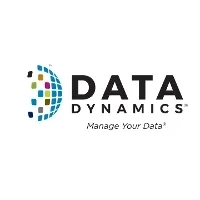2023 was the year of unparalleled technological evolution, where the widespread influence of Artificial Intelligence (AI) sparked a transformative wave across industries and societies on a global scale. The remarkable growth of AI serves as a clear indicator of its potential to reshape our lives, redefine our work, and reshape the way we engage with the world around us. At the core of this revolution lies the lifeblood of AI: data. By 2025, experts estimate that the global datasphere will reach a staggering 175 zettabytes, underscoring the immense volume of information fueling AI algorithms. However, as AI’s reliance on data deepens, so do the challenges surrounding data integrity and ethical considerations. Issues ranging from biased datasets reinforcing societal prejudices to the sophisticated threat of data poisoning have taken center stage. Revelations about biased facial recognition systems and controversies surrounding data scraping practices, such as those of Clearview AI, serve as stark reminders of the ethical tightrope organizations walk in the pursuit of technological progress. One critical focal point in this AI-driven landscape is the transformation of Data Resiliency. No longer limited to mere endurance of disruptions, Data Resiliency in the current AI era embodies a holistic and dynamic capacity of systems and organizations. It goes beyond withstanding and recovering from disruptions; it proactively adapts and evolves to ensure the continuous availability, protection, governance, and integrity of data.
This blog delves into the core of these challenges, exploring the ethical implications of data misuse and the evolving responsibility organizations bear when handling vast amounts of personal data. Additionally, it unveils a six-tiered approach to enhancing data resiliency in the era of AI, providing practical insights and strategies to address the intricacies of data management, security, and governance. The blog also sheds light on the recent partnership between Data Dynamics and Hitachi Vantara, presenting a comprehensive solution to tackle the complexities of data management in a rapidly changing environment. It explores their nuanced capabilities aimed at building a resilient data infrastructure, empowering organizations to extract maximum insights from their data while adhering to the highest standards of security, governance, and ethical use.
Data Integrity and Ethical Dilemmas in the Age of AI
As AI’s reliance on data deepens, so does the imperative to fortify against potential malicious intrusions. Yet, amid this technological surge, organizations find themselves entangled in a web of challenges related to data integrity and ethical use. One prominent challenge revolves around the persistent issue of biased data, perpetuating and amplifying societal prejudices that, in turn, lead to skewed outcomes. Shockingly, a study conducted by MIT revealed that facial recognition systems displayed error rates of up to 34.7% for darker-skinned women, shedding light on the bias embedded in the datasets used for training.
Beyond bias, the specter of data poisoning looms large, where malicious actors strategically inject misleading or corrupted data into AI systems. Data poisoning, especially through adversarial attacks, is a sophisticated tactic for manipulating AI systems by subtly corrupting the data they learn from. In the case of image recognition models, attackers exploit the vulnerabilities inherent in how AI interprets visual data. Through imperceptible alterations—often minuscule changes in pixel values—they craft “adversarial examples,” seemingly normal images deliberately tweaked to deceive AI algorithms.
These manipulations exploit the intricacies of how AI interprets and learns from data. For instance, an image of a stop sign might be altered in a way imperceptible to human eyes but enough to mislead an AI-powered autonomous vehicle into perceiving it as a speed limit sign. This subtle but deliberate manipulation poses significant risks, potentially leading to catastrophic consequences if autonomous vehicles or security systems rely on such compromised AI algorithms.
The concerning aspect is that these adversarial attacks aren’t restricted to image recognition; they can be applied across various AI applications. For instance, in natural language processing, slight alterations in text could lead AI language models to generate misleading or harmful content. The gravity of data poisoning in AI extends beyond mere misclassification. It questions the reliability and trustworthiness of AI systems, particularly in critical domains where AI-driven decisions hold substantial impact, like healthcare, finance, and security.
Furthermore, the rampant collection of personal data for AI training purposes raises profound privacy concerns. In 2023, Clearview AI, a facial recognition company, faced an onslaught of criticism for its controversial practices. The company scraped billions of images from various corners of the internet, including social media platforms, to power its facial recognition AI. The problem? This massive collection was done without asking for permission or oversight. Think about it: your pictures from social media are part of an AI system without your say. It sparked major concerns about privacy invasion and raised fears of potential misuse by governments or shady players.
What made this situation worse was Clearview AI’s lack of transparency. They kept mum about how they collected data, how they were using it, and what it meant for the people whose images were swept up in this massive database. It felt like a big ethical no-no. This whole ordeal reignited debates about data scraping, the need for consent when it comes to our personal info, and how companies handling our data should be held accountable. It’s not just about privacy; it’s about ethics in an AI-driven world.
The Clearview AI debacle served as a wake-up call, showing why we need solid rules to govern how companies collect and use our data for training AI. Without clear guidelines, we’re walking blindfolded into a future where our privacy could be a thing of the past. It’s high time we had serious conversations about the responsible and ethical use of data-driven tech.
The ethical implications of such data misuse extend far beyond a single scandal; they delve into the very fabric of digital ethics and the responsibility of organizations handling vast amounts of personal data. As AI continues to evolve and rely on data, the need for ethical guidelines to safeguard user privacy, prevent data exploitation, and ensure responsible data usage becomes increasingly imperative. Balancing technological advancements with ethical considerations is key to fostering a digital ecosystem that respects individual privacy and upholds ethical standards in the era of data-driven technologies.
According to a report by Cisco, nearly 84% of organizations experienced a data breach due to the exploitation of third-party vulnerabilities, emphasizing the pressing need for stringent data protection measures.
Navigating the intricate landscape of unreliable data demands a multi-faceted approach. It necessitates not only technological advancements in data verification and authentication but also a concerted effort to instill ethical practices and regulatory frameworks. Organizations must proactively address these challenges to ensure the integrity, security, and ethical use of data in the realm of AI. Failure to do so risks not only financial repercussions but also erodes trust and poses significant threats to society’s well-being in an increasingly data-driven world.
Enter Data Resiliency, a pivotal shield against such perils. Data Resiliency in today’s AI era is the holistic and dynamic capacity of a system or organization to not only withstand and recover from disruptions, but also to proactively adapt and evolve in the face of evolving challenges to ensure the continuous availability, protection, governance, and integrity of data.
Click here to read about A Six-Tiered Approach to Enhance Data Resiliency in the Era of AI




















